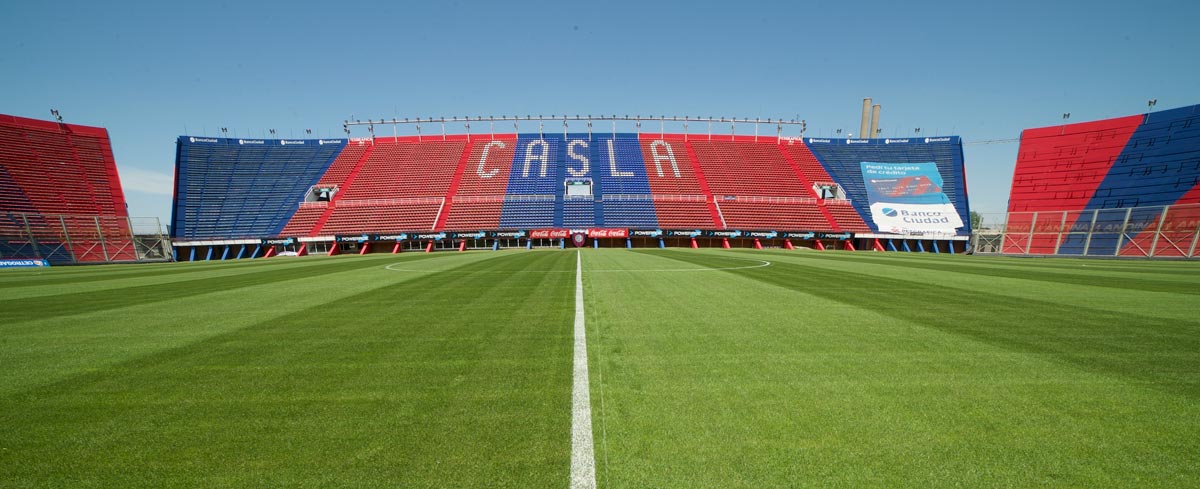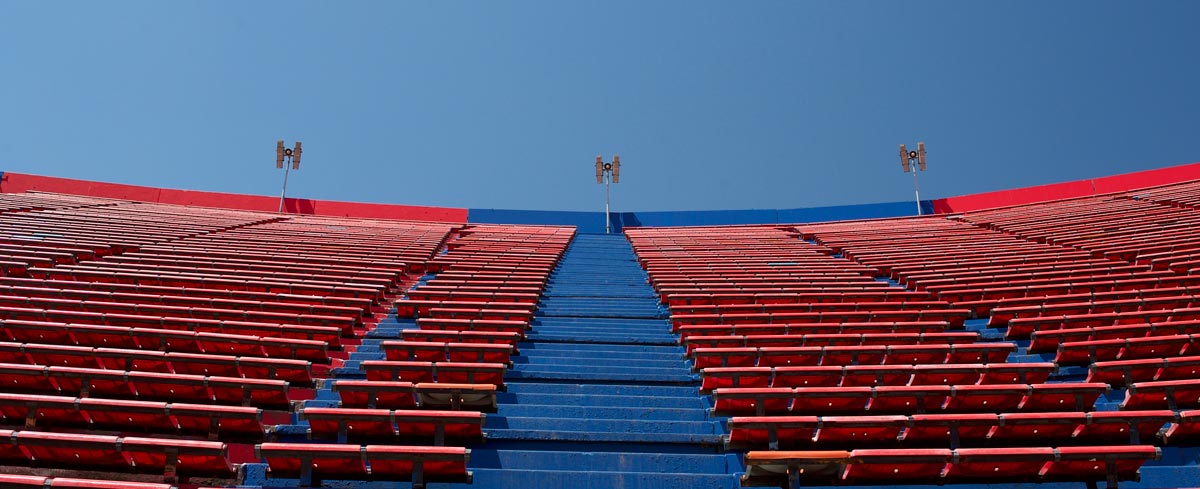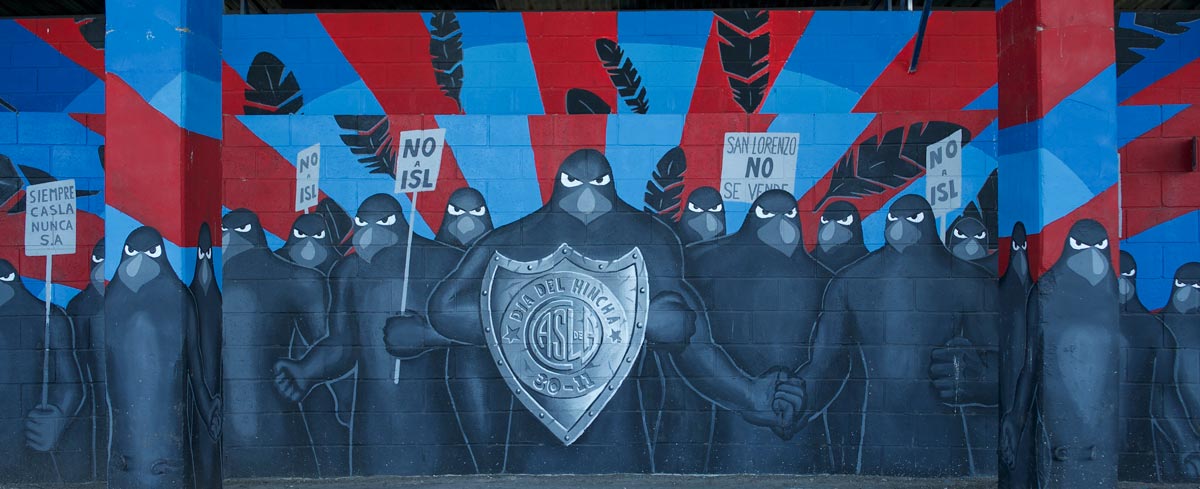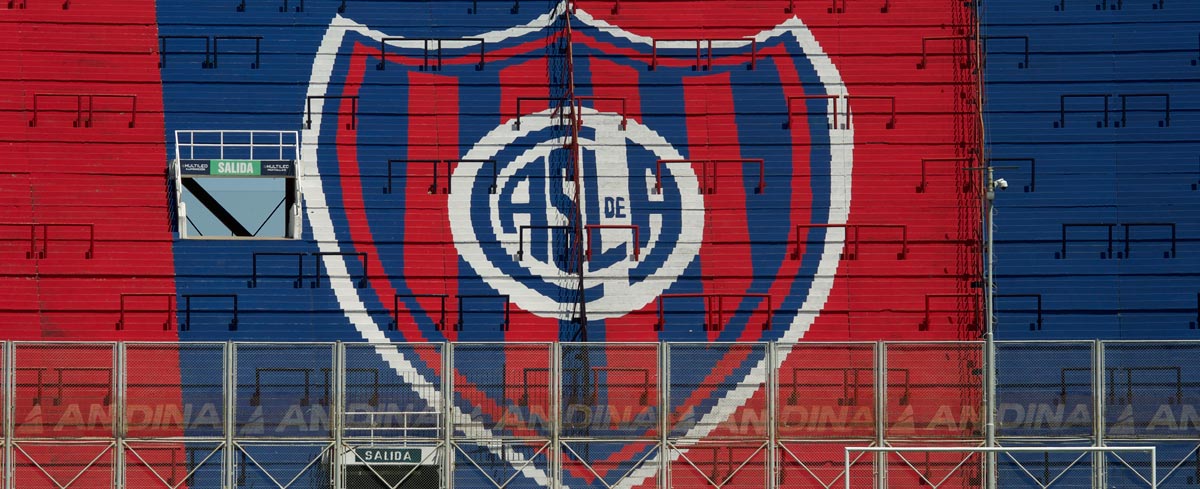Iconic Stadiums | 2. El Nuevo Gasómetro
Present in tours
If there's a "new gasometer" it's because there was an old one. Looking at this stadium, it's impossible not to notice the multiple columns and its simple, light structure. The stands are asymmetrical, changing shape and imperfectly circling the field of play without ever completely surrounding it.
If there’s one trait in the San Lorenzo club’s DNA, one that’s reflected in every corner of its stadium, it’s the red and blue rolled out like a flag that's impossible to hold. The colours are in the murals outside, the rails and fittings, the sides of the stands, a fringe of the external walls, on the ground of the terraces, the seats and the crush barriers. These two colours have a symbiotic relationship, like two beings that need to be in contact to avoid losing their essence.
Until the 1970s San Lorenzo’s home was the “Old Gasometer”, located in the neighbourhood of Boedo. Its land was appropriated and the team wasn’t able to find another place to call home until 1993, after enduring several nomadic years that only heightened the sense of nostalgia for the old stadium. In 2012, thanks to financial support from fans, the team finally gained recognition of its right to the land in Boedo where the former stadium was located. The day that the club finally returns there won’t cause any problems: the current “new” gasometer has detachable stands that could be transported to the other site. It was this light structure that made it possible for the team to build this stadium in less than a year.
With such recent construction, supporters have no black and white images of great feats to recall at this venue, but they don’t worry about that. They say they’ve made a pact with players that the great feats will occur in the days to come.
Watch the full series |
|




